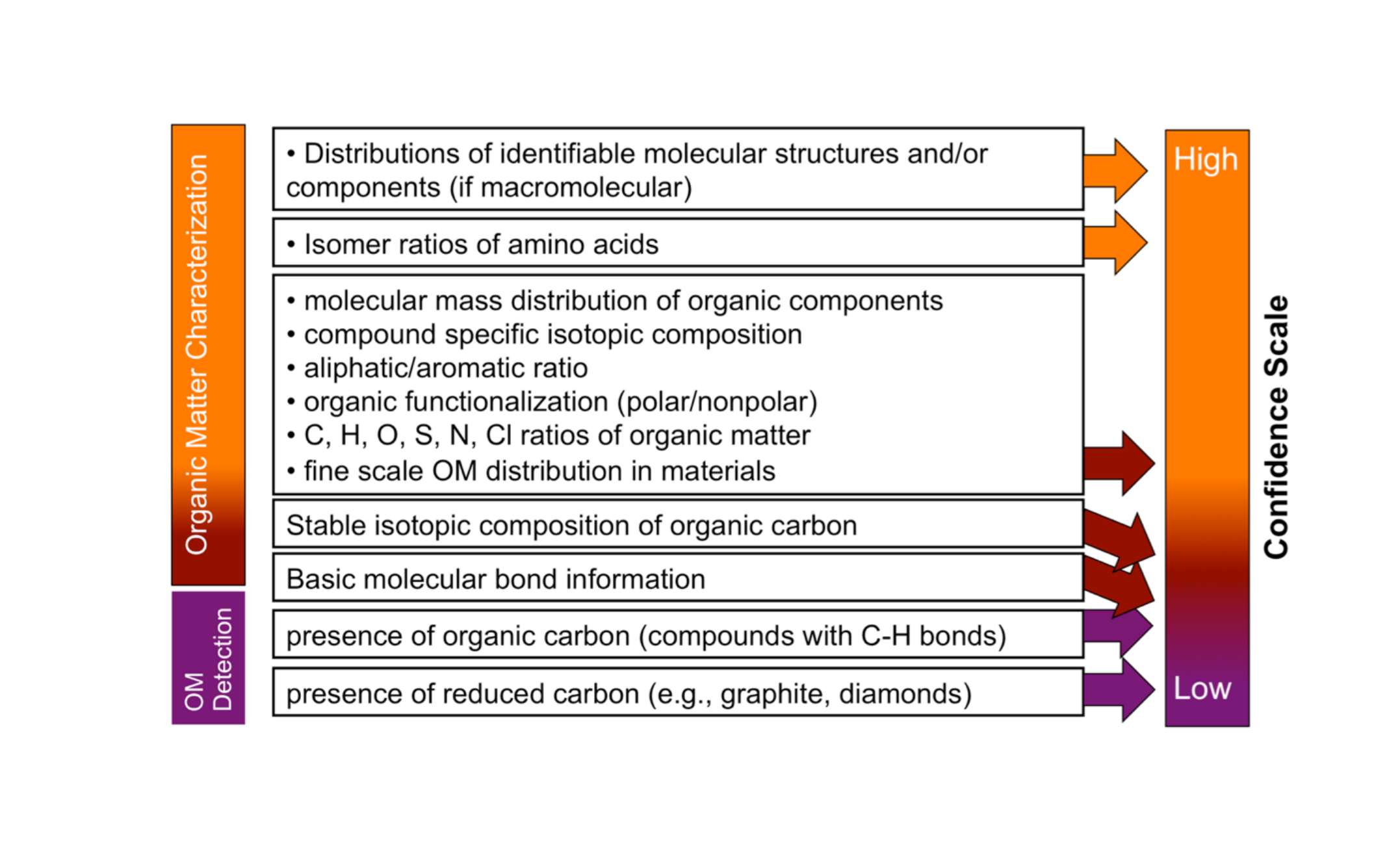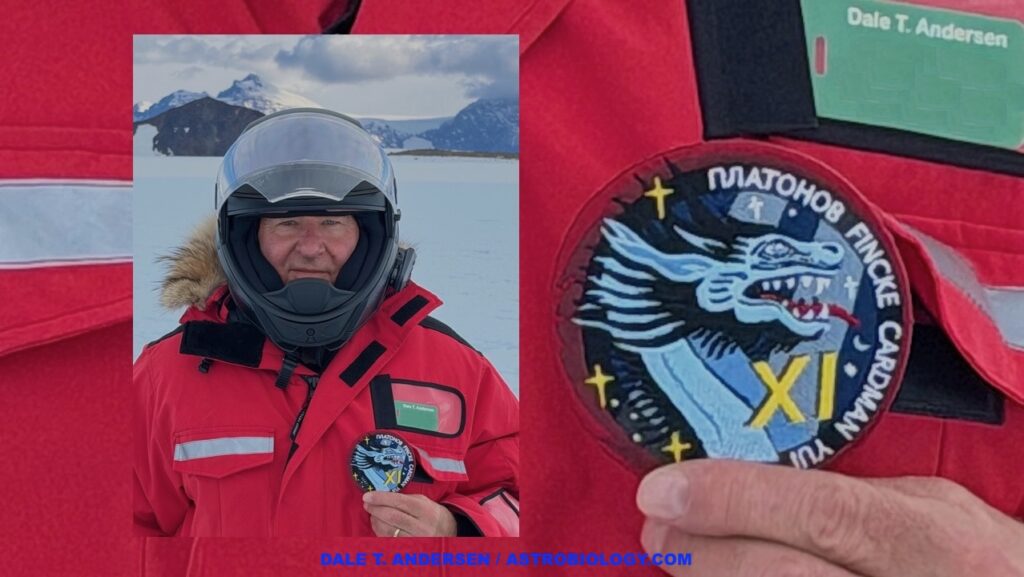Community Report From The Biosignatures Standards Of Evidence Workshop

The search for life beyond the Earth is the overarching goal of the NASA Astrobiology Program, and it underpins the science of missions that explore the environments of Solar System planets and exoplanets.
However, the detection of extraterrestrial life, in our Solar System and beyond, is sufficiently challenging that it is likely that multiple measurements and approaches, spanning disciplines and missions, will be needed to make a convincing claim. Life detection will therefore not be an instantaneous process, and it is unlikely to be unambiguous-yet it is a high-stakes scientific achievement that will garner an enormous amount of public interest.
Current and upcoming research efforts and missions aimed at detecting past and extant life could be supported by a consensus framework to plan for, assess and discuss life detection claims (c.f. Green et al., 2021). Such a framework could help increase the robustness of biosignature detection and interpretation, and improve communication with the scientific community and the public.
In response to this need, and the call to the community to develop a confidence scale for standards of evidence for biosignature detection (Green et al., 2021), a community-organized workshop was held on July 19-22, 2021.
The meeting was designed in a fully virtual (flipped) format. Preparatory materials including readings, instructional videos and activities were made available prior to the workshop, allowing the workshop schedule to be fully dedicated to active community discussion and prompted writing sessions.
To maximize global interaction, the discussion components of the workshop were held during business hours in three different time zones, Asia/Pacific, European and US, with daily information hand-off between group organizers.
Victoria Meadows (University of Washington), Heather Graham (NASA-GFCS), Victor Abrahamsson (JPL NASA), Zach Adam (Arizona University), Elena Amador-French (NASA-JPL/Caltech), Giada Arney (NASA-GSFC), Laurie Barge (JPL NASA), Erica Barlow (Penn State University), Anamaria Berea (George Mason University), Maitrayee Bose (Arizona State University), Dina Bower (University of Maryland, College Park), Marjorie Chan (University of Utah), Jim Cleaves (Carnegie Institution for Science), Andrea Corpolongo (University of Cincinnati), Miles Currie (University of Washington), Shawn Domagal-Goldman (NASA-GSFC), Chuanfei Dong (Princeton University), Jennifer Eigenbrode (NASA-GSFC), Allison Enright (U. New Brusnwick), Thomas J. Fauchez (NASA-GSFC), Martin Fisk (Oregon State University-Emeritus), Matthew Fricke (University of New Mexico), Yuka Fujii (Earth-Life Science Institute, Tokyo Institute of Technology), Andrew Gangidine (U.S. Naval Research Laboratory), Daniel Glavin (NASA-GSFC), Lee Grenfell (DLR-Germany), Sonny Harman (NASA-Ames), Roland Hatzenpichler (Montana University), Libby Hausrath (University of Nevada Las Vegas), Bryana Henderson (NASA-JPL/Caltech), Sarah Stewart Johnson (Georgetown University), Andrea Jones (NASA-GSFC), Trinity Hamilton (University of Minnesota), Keyron Hickman-Lewis (Natural History Museum, London), Linda Jahnke (NASA-Ames), Betul Kacar (University of Arizona), Ravi Kopparapu (NASA-GSFC), Christopher Kempes (Santa Fe Institute), Adrienne Kish (Museum National d’Histoire Naturelle), Joshua Krissansen-Totton (UC Santa Cruz), Wil Leavitt (Dartmouth), Yu Komatsu (National Astronomical Observatory of Japan), Tim Lichtenberg (University of Oxford Department of Physics), Melody Lindsay (Bigelow Laboratory for Ocean Sciences), Catherine Maggiori (McGill University), David Des Marais (NASA-Ames), Cole Mathis (Santa Fe Institute, Arizona State University), Yuki Morono (Japan Agency for Marine-Earth Science and Technology), Marc Neveu (University of Maryland/NASA-GSFC), Grace Ni (University of Maryland), Conor Nixon (NASA-GSFC), Stephanie Olson (Purdue University), Niki Parenteau (NASA-Ames), Scott Perl (JPL NASA), Richard Quinn (SETI institute), Chinmayee Raj (Georgia Institute of Technology), Laura Rodriguez (JPL NASA), Lindsay Rutter (JSPS postdoctoral fellow at University of Tsukuba), McCullen Sandora (University of Southern Denmark), Britney Schmidt (Cornell University), Eddie Schwieterman (University of California, Riverside), Antigona Segura (Universidad Nacional Autonoma de Mexico), Fatih Sekerci (Istanbul Technical University/The Open University UK), Lauren Seyler (Stockton University), Harrison Smith (Earth-Life Science Institute), Georgia Soares (University of New South Wales Sydney), Sanjoy Som (NASA-Ames), Shino Suzuki (Japan Aerospace Exploration Agency | JAXA – Institute of Space and Astronautical Science (ISAS)), Bonnie Teece (University of New South Wales Sydney), Jessica Weber (JPL NASA), Felisa Wolfe-Simon, (Ind consultant), Michael Wong (Carnegie Science), Hajime Yano (Japan Aerospace Exploration Agency | JAXA – Institute of Space and Astronautical Science (ISAS)), Liza Young (U. of Washington)
Comments: 86 pages, 14 figures, workshop report
Subjects: Instrumentation and Methods for Astrophysics (astro-ph.IM); Earth and Planetary Astrophysics (astro-ph.EP); Populations and Evolution (q-bio.PE)
Cite as: arXiv:2210.14293 [astro-ph.IM] (or arXiv:2210.14293v1 [astro-ph.IM] for this version)
Submission history
From: Andrew Gangidine
[v1] Tue, 25 Oct 2022 19:33:17 UTC (3,343 KB)
https://arxiv.org/abs/2210.14293
Astrobiology








